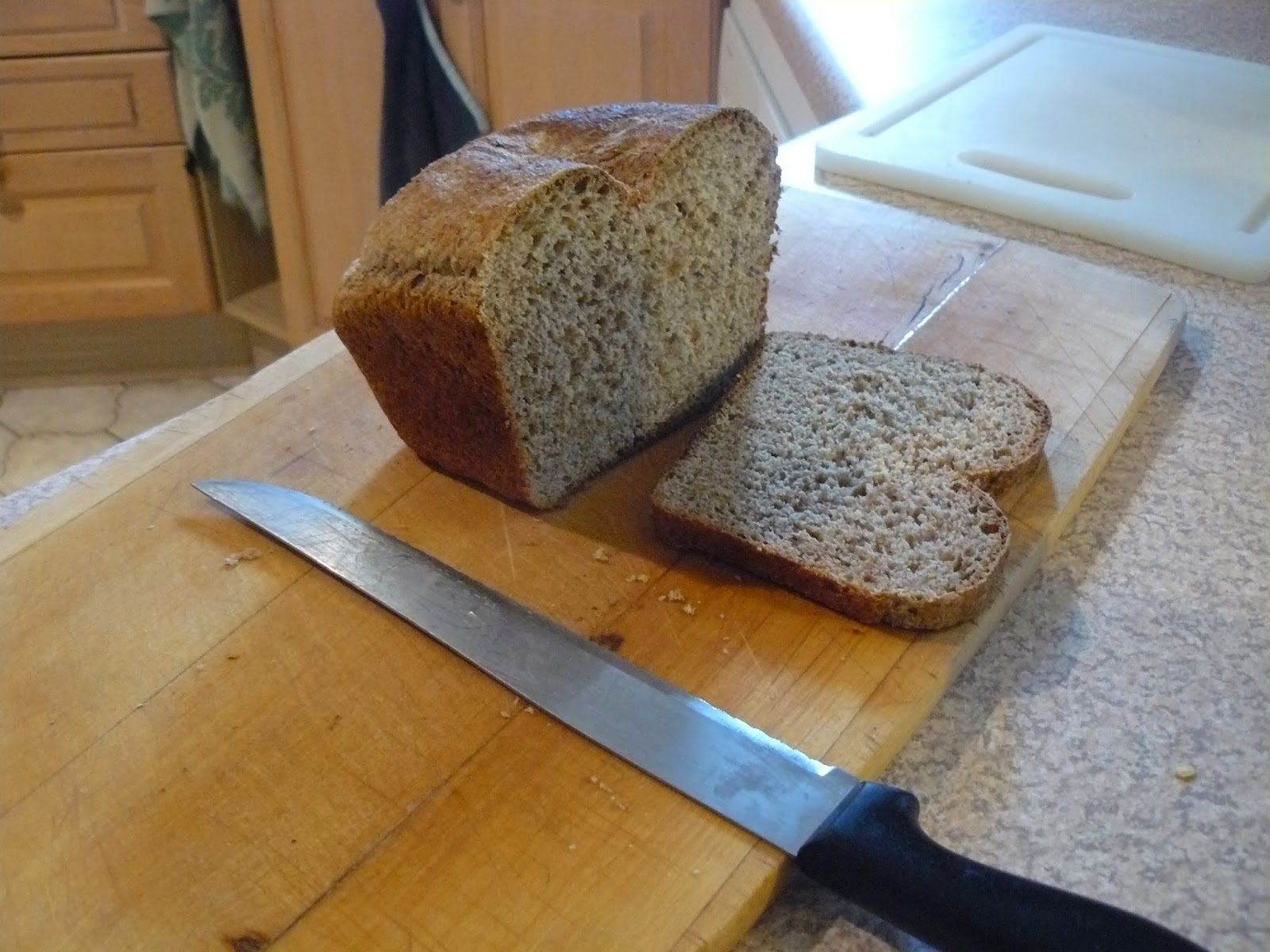Hello, gosh it's been a month - urm, been a bit busy - well, it's half term now and nice to have a bit of time to do things that aren't work, like reading or stamp making or baking...
Having given up on the so-called variety of bread available
at extortionate prices from the supermarket, we have resorted to making our own
– minus bread maker I might add. After
baking this, my third loaf in as many days (one thing about home baked loaves
is that we seem to eat them a lot faster than shop bought ones!) I have decided
to share our perfected recipe.
Ingredients:
- 500g bread flour (I used strong wholemeal)
- 7g sachet of fast action dried yeast
- 1½ tsp finely ground salt (if you're using larger, flakier salt, you'll need around 2 tsp)
- 1 tbsp honey
- 1½ tbsp olive oil (plus around another tbsp for kneading)
- Around 300ml hand-hot water
- Anything you want in your bread; olives, sun dried tomato, herbs etc. Be generous when adding these as it can look like a lot when you add it to the dough, but then come out pretty sparse.
Method:
- Add together the flour, salt and yeast together and mix in a large bowl
- Stir in around half the water and mix well with a large spoon, or your hands if you don’t mind getting them sticky, add in the olive oil and honey and continue to mix (this is where I add in my extra ingredients as it only gets harder to mix in, the longer you wait). Add the rest of the water a little at a time until all the flour at the bottom of the bowl has been mixed in. If you are adding something wet like tomato to the mix, you probably won’t need the whole 300ml of water
- Once all the mixture is coming together, oil a surface with about half a tbsp of olive oil and empty the dough onto it to knead - if you use oil here instead of flour you don’t dry the dough out so much during kneading.
- Everyone seems to knead differently, but you essentially just need to be stretching out the dough and folding it back up again to build up the gluten in the flour. Knead for around 5 to 10 minutes until the dough can be stretched a fair bit without breaking.
- If you’re making a loaf, flatten the dough into a rectangle(ish) and fold the edges into the middle, then place it seam down into a well greased loaf tin. If you’re going for a free form loaf, shape the dough into a ball and place on a well greased baking tray. Don’t be tempted to flatten it into a nice loafy shape – it will expand and do that itself. I use olive oil for a baking tray, but butter for a tin because it sticks to the sides better.
- Leave the dough covered by a damp cloth to prove – depending upon how impatient you are, you can leave it in a warm place for 30-40 minutes or at room temperature for about an hour. Dough with added stuff may take longer to prove, but you’re waiting until it has about doubled in size, and a reliable test seems to be that it’s done if you give it a prod and it holds the impression. Sprinkle a handful of flour over the top of the loaf and cut a slash in the top with a sharp knife
Whilst the dough is proving, preheat the oven to 190°C or gas mark 6EDIT: repeating this recipe, I think it's best not to pre-heat the oven because starting on a low heat means the bread seems to bake through better. Bake for 30-35 minutes at gas mark 6 or 190°C.- Once it’s out of the oven, place on a cooling tray and upturn your tin/take the loaf off the baking tray. If you tap the bottom, it should make a nice hollow sound. Also, if you’re bottom and side crust isn’t crusty enough for you, put the loaf back in the oven upside down for a few minutes under a watchful eye until it crisps up a bit.
 |
| This is an olive and sun dried tomato loaf |
 |
| and this was (note the past tense) a plain but equally delicious one |
Personally, I like a good crust on my bread, and I absolutely hate really soggy bread that you can practically squish back into a ball of dough, so this recipe makes a loaf that has a thickish crust to them and although not stodgy, are nice and firm.
We bought a 1.5kg bag of flour that cost about £1.40 and that can make three 800/900g loaves with this recipe. That comes to just under 50p per loaf, plus you can add in whatever you want to suit your taste. Minus time for proving and baking, when you can get on and do other things, this only takes about half an hour, so all in all, I’m pretty pleased with our transition from shop bought to homemade bread. :)


